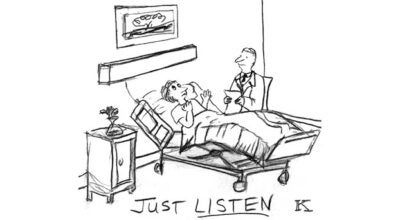Opioid numbers drop in County
Published 8:00 am Friday, December 2, 2022
|
Getting your Trinity Audio player ready...
|
By Brian Carlton and Crystal Vandegrift
The K-V Dispatch
The numbers are dropping and that’s a good thing. As of 2020, the latest data we have, an average of 43.3 opioid prescriptions were given out per each 100 people in the United States. Lunenburg County is far below that, coming in at 6.34, according to the Centers for Disease Control (CDC). That’s also lower than some neighboring counties, as 20.8 opioid prescriptions were given out for every 100 people in Prince Edward County. Charlotte County, meanwhile, came in at 25.2 prescriptions for every 100 people.
“Much of this trend is due to increased caution by many providers in prescribing opiates or any controlled substance,” said Piedmont Health District Director Maria Almond. “Often, the preference now is for primary care providers to refer patients to a specialized pain provider, who balances the prescribing of opiates with other (alternatives).”
In fact, as some other Southside counties find their opioid problem growing, Lunenburg is headed in the opposite
direction. Now, as money starts coming in from opioid production settlements, it’s going to further help the county clean up.
OTHER AREAS STRUGGLE
By comparison, as we mentioned, other parts of Southside are still struggling. The city of Martinsville, for example, remains one of the top three areas in the nation in terms of opioid prescriptions, with 343.6 for every 100 people. The city of Lynchburg is the only other part in Virginia that comes close, with 104.5 prescriptions per every 100 people. Even the city of Richmond remains somewhat low, despite a much larger population, with only 55 prescriptions for every 100 people.
Now fewer opioid prescriptions is a positive, but it’s just part of the larger picture. While fewer prescriptions helps potentially lower the number of addicts in the future, local officials still have to deal with the existing addicts. Lunenburg is improving in that area as well. The Virginia Department of Health reports last year, the county only saw two deaths linked to opioids. That’s a death rate of 16.3 per every 100,000 residents.
There are also hidden costs related to addiction. The Virginia Department of Health partnered with Virginia Commonwealth University to launch an opioid cost calculator for cities and counties in Virginia. The tool looks at the loss of labor costs in the county, along with costs of crime related to addiction, state and local government costs and healthcare costs related to the problem.
To this point, the opioid crisis has cost Lunenburg County $2.31 million, with an ongoing expense of $194 per capita. It’s dramatically lower than other counties in the region. Opioid addiction caused Prince Edward, for example, a cost of $7.4 million, with an ongoing annual expense of $342 per capita. In Buckingham, the number is $5.3 million, with $318 per capita and Cumberland has seen a cost of $2.6 million, with $273 per capita.
Now the good news is that all of those numbers are in the second-lowest tier in Virginia, highlighting that locally, the problem continues to shrink.
HOW DID THIS HAPPEN?
We talk about opioids, but how did this problem get started? For that, you can blame drug companies. Beginning in the late 1990s, pharmaceutical companies marketed opioids heavily, claiming they were less addictive than regular pain medication. They sponsored medical-education courses, created ads and sent sales representatives to doctors, often giving free samples. As a result, in 2015, U.S. doctors prescribed three times more opioids than they had in 1999, according to the CDC.
In 2007 and 2020, Purdue Pharma pleaded guilty to misleading doctors and the public about how addictive OxyContin was. Company officials admitted that Purdue paid doctors through a speakers program, encouraging them to write more opioid prescriptions. They also admitted to paying a medical records company to send information on patients to doctors as another way to encourage opioid prescriptions.
This fall, Virginia was part of another settlement, this time with opioid manufacturer Janssen Pharmaceuticals, a subsidiary of Johnson & Johnson ( J & J). The $99.3 million deal will see cities and counties receive funds over the next nine years. In addition, Johnson & Johnson agreed to stop selling opioids in the U.S. They also can’t promote opioids as a prescription or fund any other group that either promotes the drugs or legislation linked to them.
Money from that settlement is now being disbursed to the cities and counties across the state. While some of the money must be spent to prevent future damage, most of it comes without strings attached. That’s left it up to local governments to decide where to use it.
Now, to be clear, we’re not talking about millions of dollars here. Lunenburg County received $19,253.34 or 0.088% of the settlement.
During the October Board of Supervisors Meeting, County Attorney Rennie advised that the first payment from the settlement had been received at the Treasurer’s Office.
Rennie advised that a separate line item be set up for the funding and the county would need to follow the guidance on how the funds may be used.
According to Rennie, funds must be used to mitigate the abuse and consequences of opioids. “Some localities are helping their local first responders and medical services,” Rennie said.



